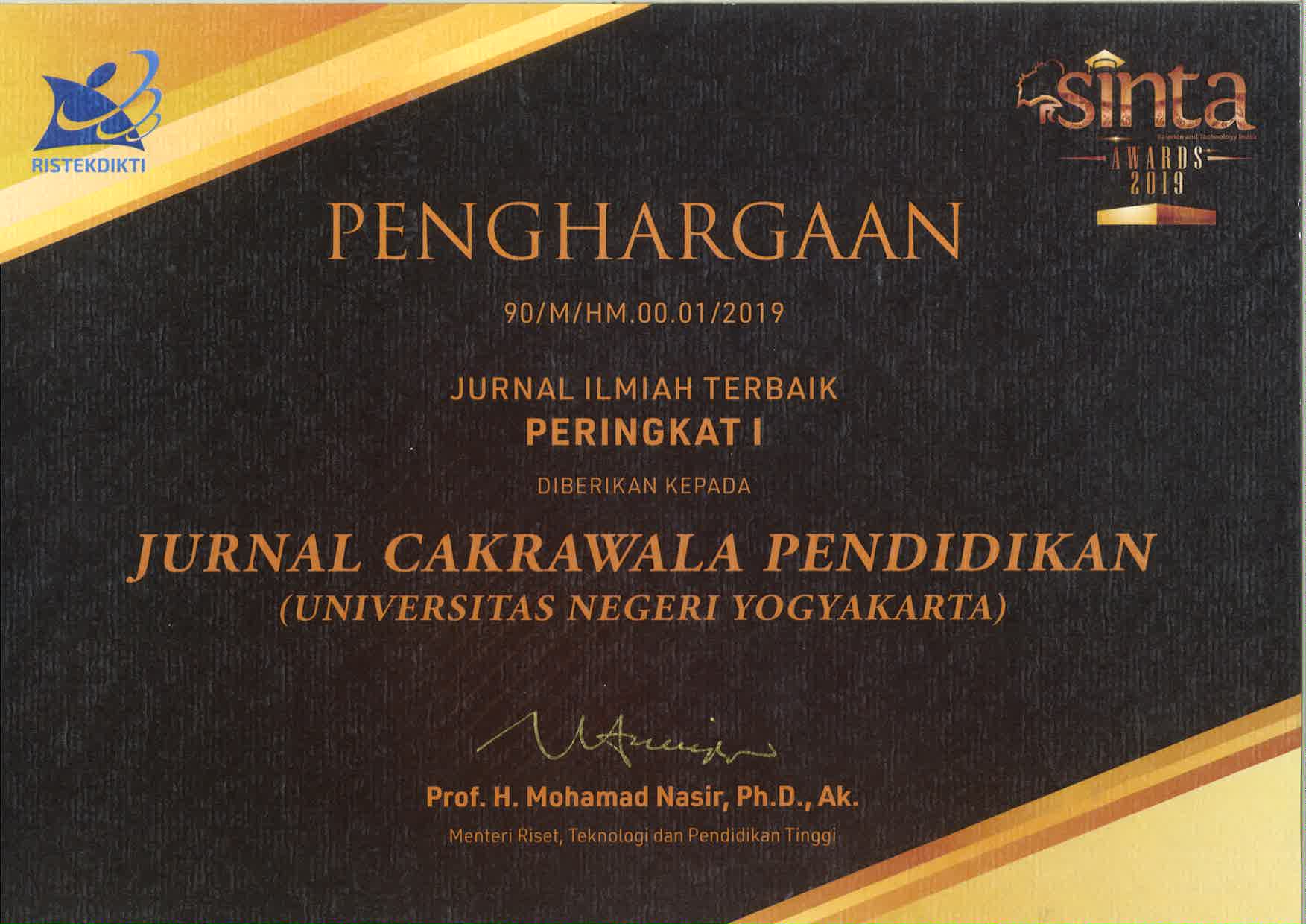Developing Malay traditional dance model for preschoolers: Evidence from contextual and content needs
Downloads
Downloads
Biber, K. (2016). The effects of folk-dance training on 5-6 years children's physical and social development. Journal of Education and Training Studies, 4(11). https://doi.org/10.11114/jets.v4i11.1820
Chatzihidiroglou, P., Chatzopoulos, D., Lykesas, G., & Doganis, G. (2018). Dancing effects on preschoolers' sensorimotor synchronization, balance, and movement reaction time. Perceptual and Motor Skills, 125(3), 463–477. https://doi.org/10.1177/0031512518765545
Dabalsa, J.M, (2017). Dance for special needs students: building confidence and motor skills. Theses. 56. https://digscholarship.unco.edu/theses/56
Etikan, I., Sulaiman Abu Bakar, M., & Rukayya Sunusi, A. (2016). Comparison of convenience sampling and purposive sampling. American Journal of Theoretical and Applied Statistics, 5(1), 1–4. https://doi.org/10.11648/j.ajtas.20160501.11
Fadzil, R. M., Badrul Redzuan, A. H., & Roslina, A. L. (2016). Pemuliharaan warisan terpinggir: menanggap peranan medium sinema. Malaysian Journal of Communication, 32(1), 208–223. https://doi.org/https://doi.org/10.17576/JKMJC-2016-3201-10
Fairuzzah, B., Farahdina, A. M., & Mujaini, T. (2019). Cabaran dan pemantapan budaya Melayu dalam Penerusan Tamadun Melayu. ResearchGate, April 1-13. https://www.researchgate.net/publication/332110585_Cabaran_dan_Pemantapan_Budaya_Melayu_dalam_Penerusan_Tamadun_Melayu
Fazli, M., Saearani, T., & Chan, A. H. (2021). Pedagogical competency of dance instructors in the training of malay court dance skills among upper secondary students at johor national art school. Harmonia: Journal of Arts Research and Education, 21(2), 221–232. https://doi.org/http://dx.doi.org/10.15294/harmonia.v21i2.31668
Gratsiouni, D., Koutsouba, M., Venetsanou, F., & Tyrovola, V. (2016). Learning and digital environment of dance – the case of Greek traditional dance in Youtube. European Journal of Open, Distance and E-Learning, 19(2), 80–95. https://doi.org/10.1515/eurodl-2016-0009
Gripson, M. P., Lindqvist, A., & í˜stern, T. P. (2021). We put on the music and then the children dance - Swedish preschool teachers' dance educational experiences. Research in Dance Education, 00(00), 1–23. https://doi.org/10.1080/14647893.2021.1928622
Hafiz, N. H., Mohd Anuar, R., & Jeffri, S. J. (2019). Pengaruh budaya popular dalam kelompok remaja bandaran : analisis terhadap rave dari perspektif islam pengaruh budaya popular dalam kelompok remaja bandaran: Analisis terhadap rave. November, 2015–2016.
Haida, F. H., Norbahiah, Z., & Saharudin, I. (2016). Interactive application: Innovative approach to preserve the traditional dance. Proceedings of 63rd The IIER International Conference, February, 61–64.
Jamariah, M., Mahani, R., & YM Raja Azuan Nahar, R. A. (2017). Needs and criteria in developing creative movement module for preschool children. International Journal of Academic Research in Business and Social Sciences, 7(2), 570. https://doi.org/10.6007/IJARBSS/v7-i2/2665
Kang, J., Kang, C., Yoon, J., Ji, H., Li, T., Moon, H., Ko, M., & Han, J. (2023). Dancing on the inside: A qualitative study on online dance learning with teacher-AI cooperation. Education and Information Technologies, 28(9), 12111–12141. https://doi.org/10.1007/s10639-023-11649-0
Kapodistria, L., Chatzopoulos, D., Chomoriti, K., Lykesas, G. & Lola, A. (2021). Effects of a Greek traditional dance program on sensorimotor synchronization and response time of young children. International Electronic Journal of Elementary Education. 14. 1-8. 10.26822/iejee.2021.224.
Lase, D. (2019). Pendidikan di era revolusi industri 4.0. Jurnal Sundermann, 34–43. https://doi.org/10.31219/osf.io/8xwp6
Leonard, A. E. (2022). Taking on the challenges of our present: Dance education for children and youth. Journal of Dance Education, 22(3), 141–143. https://doi.org/10.1080/15290824.2022.2095792
Lindsay, A. R., Starrett, A., Brian, A., Byington, T. A., Lucas, J., & Sigman-Grant, M. (2020). Preschoolers build fundamental motor skills critical to an active lifestyle: The all 4 kids© intervention study. International Journal of Environmental Research and Public Health, 17(9). https://doi.org/10.3390/ijerph17093098
Lutz, T., & Kuhlman, W. D. (2000). Learning about culture through dance in kindergarten classrooms. Early Childhood Education Journal, 28(1), 35–40. https://doi.org/10.1023/A:1009595520022
Lykesas, G., Tsapakidou, A., & Tsompanaki, E. (2014). Creative dance as a means of growth and development of fundamental motor skills for children in first grades of primary schools in Greece. Asian Journal of Humanities and Social Studies, 02(01), 2321–2799. www.ajouronline.com
Payne, H., & Costas, B. (2021). Creative dance as experiential learning in state primary education: the potential benefits for children. Journal of Experiental Education, 44(3), 277-292. https://doi.org/10.1177/1053825920968587
Razali, M. F., Abu Hassan, B. R., & Latif, R. A. (2016). Pemuliharaan warisan terpinggir: menanggap peranan medium sinema. Jurnal Komunikasi: Malaysian Journal of Communication, 32(1), 651–668.
Rosmah, A. G., & Mariani, M. N. (2020). Faktor yang mempengaruhi peranan guru dalam pelaksanaan kurikulum standard prasekolah kebangsaan (KSPK) di Malaysia. Jurnal Kurikulum & Pengajaran Asia Pasifik, 8(4), 35–49.
Setyawan, D., & Dopo, F. (2020). Strengthening national identity through the learning of East. Sage.
Stevens, K., Pedro, R. A., & Hanrahan, S. J. (2020). Building an authentic cultural curriculum through tertiary cultural dance. Arts and Humanities in Higher Education, 19(3), 264–284. https://doi.org/10.1177/1474022219833648
Suartini, T., Weismann, I. T. J., Wijaya, H., & Helaluddin. (2020). Development of learning methods through songs and movements to improve children's cognitive and psychomotor aspects. European Journal of Educational Research, 9(4), 1615–1633. https://doi.org/10.12973/eu-jer.9.4.1615
Tavakol, M., & Dennick, R. (2011). Making sense of Cronbach's alpha. International Journal of Medical Education, 2, 53–55. https://doi.org/10.5116/ijme.4dfb.8dfd
Twiner, A., Lucassen, M., & Tatlow-Golden, M. (2022). Supporting children's understanding around emotions through creative, dance-based movement: A pilot study. Learning, Culture and Social Interaction, 37(August), 100659. https://doi.org/10.1016/j.lcsi.2022.100659
Wulandari, H., Agustin, M., Narawati, T., & Masunah, J. (2019). Learning model of creative dance for Early Childhood. March. https://doi.org/10.2991/icade-18.2019.43
Yusoff, M. Y., & Hanafiah, M. G. (2015). Impak media baharu terhadap sistem nilai masyarakat Melayu di Malaysia (The impact of new media on the Malay system in Malaysia). Jurnal Komunikasi, Malaysian Journal of Communication, 31(2), 33–46. https://doi.org/10.17576/jkmjc-2015-3102-03
Zaric, D., Gojkovic, Z., Sporis, G., & Dejan Madic. (2018). Health-related fitness in preschool children: Difference between organised and unorganised physical activity. Exercise and Quality of Life, 10(1), 29–34. https://doi.org/10.31382/eqol.180603
Jurnal Cakrawala Pendidikan, Jurnal Ilmiah Pendidikan, with ISSN: 0216-1370, is published by the Institute of Education Development and Quality Assurance (LPPMP UNY). Cakrawala Pendidikan has been recently has been re-accredited by Indonesian Ministry of Education and Culture decision Number 230/E/KPT/2022 which is valid for five years since enacted on 30 December 2022.




























